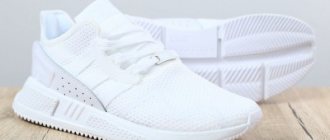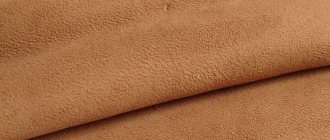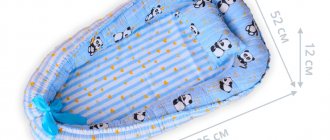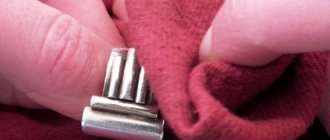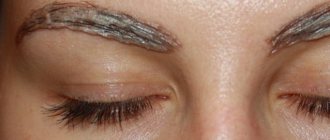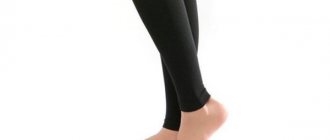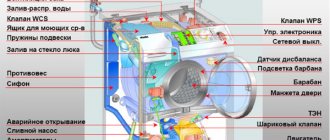Properly selected shoes are an important component of a stylish wardrobe. But, in addition to the appearance of sneakers, sneakers, shoes or boots, the choice of lacing type, color and length of laces also matters. The number of circuits reaches several thousand only when using standard 4-8 holes. There are a huge variety of ways to tie laces on boots or boots, which can have up to 12 pairs of eyelets. Some patterns are considered functional, others are decorative types intended solely to attract attention.
Basic functions and basic lacing rules
Shoe laces perform several important functions. Practical requirements require tying them tightly: to securely fix the shoes on your feet, ensure comfort and ease of wearing. The decorative function lies in the ability to tie a knot beautifully and originally, even when using ordinary laces. Unique lacing methods can successfully complement your look, making it more vibrant.
It is recommended to tie your shoelaces according to the following rules:
- The toes should be squeezed when lacing, which will allow you to regulate the pressure of the shoes;
- laced shoes should not interfere with movement and squeeze the legs - you can check this by rotating your foot and rolling from toe to heel;
- for high shoes it is undesirable to use the simplest well-known patterns, since they unevenly tighten the foot;
- for people with narrow feet, it is advisable to use an additional row of loops installed wider than the usual placement;
- if there is an injury on the foot, you should skip the holes located above this area - this will reduce the pressure on the sore spot;
- Lacing should be done only with shoes on, unlacing them before removing them - this will ensure the correct tightness and increase the service life of things.
The emergence of new ways of tying shoelaces is also associated with fashion. New trends put demands on everything, even on lacing patterns. Although the classic options such as “zigzag” or “ladder” still remain popular.
How to tie shoelaces
Method 8.
Straight lacing type. Applicable only to shoes with an even number of holes.
1) one of the ends (blue) is inserted into the lower right hole from the outside to the inside and, passing from the inside through the entire row, comes out in the top hole of the same row.
2) the second half of the lace (yellow) is inserted from the outside into the lower left hole, brought out of the hole next to the top, then passed from the front into the right hole parallel to this hole.
3) then, along the outside, the “yellow” part is inserted from the hole above, comes out of it and is passed from the outside into the parallel left hole.
4) so the lacing is carried out to the top hole. The difficulty is to determine the required length of the working part of the lace. But the result looks neat and impressive.
Lacing patterns
Different lacing options allow you to decorate your shoes, make them more comfortable to wear, or even compensate for the length of the laces. They do not need to be cut or shortened, but simply tied using a suitable method. Standard weaving patterns are known to everyone; they are quick and simple. If you wish, you can choose more original ones, but you must remember that they are not suitable for every shoe and style.
Classic zigzag
Shoes laced in a “classic zigzag” pattern do not rub your feet. The disadvantages of the technique are that its use can lead to deformation of the boot. The lace is passed through the lower eyelets, leading out simultaneously from both sides. Crossing the ends, pass them in the same way through the next row. The steps are repeated until lacing is completed on the top holes.
The classic zigzag method of tying shoelaces is considered the most common. Chosen for its simplicity, convenience and relatively high tying speed.
Hidden Direct
This method can hide both the knot and the back of the laces. Visually hidden straight lacing looks neater than other methods - although tying the laces is more difficult. It is recommended to use it for shoes that have an even number of eyelets. If the number is odd, one of the pairs is skipped.
The lace should be pulled through the lower holes from the outside to the inside. The right part is taken one row higher, threaded through the opposite hole, the left part out through the next eyelet. The hole where the right part has already been threaded is skipped. The action is repeated first for the left end, threading it into the opposite eyelet. Continue to the top row, then tie it, then hide the knot.
Pokhodnaya
The purpose of the hiking pattern is to improve grip and avoid lacing getting caught on branches and snags. In this case, the risk of getting caught is minimal, although lacing is quite complicated. They choose it for its lack of knots and original appearance. The boots can be laced in a mirror image in relation to each other, then you get a funny knot on the side.
Threading of the lace begins from the bottom row, the ends are brought out. The first part is lifted up, first inserted into the next eyelet in this direction, then threaded into the hole opposite. Continuing, lift both ends, passing each into its own hole. Lacing is carried out further according to the same principle - when one end reaches the top, the second is passed through the remaining eyelet. The knot is made on one of the sides.
Fast
When lacing winter shoes, they mostly use quick methods. They are suitable for people who prefer to spend a minimum of time on putting on shoes. The disadvantages of such schemes are their low aesthetic characteristics compared to other options.
The process begins by passing the lace through the bottom eyelets to the inside. The left side is pulled diagonally into the top row. The right one is brought out into the hole above the grommet, into which the other end has already been threaded, and, passing to the other side, they are led in a straight line from the outside to the inside. Lacing continues in this manner until the very top.
Lattice
“Lattice” is a complex but beautiful weave. Not many people know how to lace shoes this way. In fact, it is easier than it seems, the main thing is to remember the beginning of lacing. One of the conditions for this method is 6 or 8 holes on the shoes. Therefore, it is suitable for medium-height sneakers.
At the very beginning, the laces are threaded into the lower holes from the inside. The ends are crossed and threaded into the 4th row from the outside. One of the ends is passed from the inside into the second eyelet, and from the outside into the fifth from the opposite side. The other part of the lace is also inserted into the 2nd hole from its edge, threaded under the first and inserted from the outside into the 5th hole. The first end is threaded into the 3rd eyelet from the inside, drawn in a cross and inserted into the 6th hole from the inside. The same actions are done with the second part, then a knot is made.
Web
The “spider web” lacing looks cool and lasts a long time without losing its shape. Shoes laced in this way are fixed on the feet more tightly. The disadvantages of the technique are complex tightening, which will require more time than others. Suitable for shoes with 6 rows of holes.
The laces are inserted from the inside into the second row, then threaded into the first eyelets on the same side. The ends are crossed and passed from the inside through 3 holes - the cross is obtained on top of the first horizontal line. The ends are crossed and inserted from the inside into the fourth row. As a result, each subsequent cross is higher than the previous one. The laces are threaded under the second loops and inserted into the 5th holes on opposite sides, and then repeat the same with the 6th row.
Ladder
The technique refers to methods of tying shoelaces that allow you to shorten long ends. The advantages of the method are an attractive appearance and accuracy. Laces tied using this method on high shoes look especially impressive. Among the disadvantages is difficult tightening.
The lace is passed through the lower holes and brought out on both sides. Both parts are lifted and carried into the next row. The ends are crossed, threaded under the vertical lacing of the opposite end, and raised to the next row of holes. At the top, both parts are crossed again, passed under the vertical lacing and pulled apart, ensuring a tight tie.
With knots
Lace is chosen because it is beautiful and durable, and also provides additional tightening. Used for roller skates, winter and ski boots. There are practically no downsides to this method, except that the weaving is difficult to loosen before removing shoes.
The lace is threaded into the bottom row, then brought out with both ends. Both parts are crossed and tied once at each stitch in a “starter knot” fashion. The ends are pulled apart, brought under the holes, and brought out. The process continues all the way to the top.
Chess board
The lacing method is chosen because it looks attractive and unusual if you use two colors of laces. However, it does not tighten the shoes too tightly. The checkerboard pattern should only be used for loose sneakers that do not tie when walking.
Lacing begins with two pairs of multi-colored laces. First, the shoes are laced with the first color using the “straight-light” pattern. Then they begin to lace with the second lace from below, passing it in a wave-like manner. Having reached the top, they wrap the first color with a lace of the second color, then make a wavy lacing to the bottom. At the end, you should tie a knot, hiding it inside the shoe.
Lightning
The method may seem complicated, especially for those who have not tried it before. But such lacing looks original and firmly fixes the leg. A pattern whose outline resembles a lightning bolt is used for lacing high winter shoes (boots and boots), roller skates and skates.
The lace is pulled through the lower eyelets, coming out of both holes on the sides. The ends are wrapped behind a tie of the same level and threaded into the next row. Cross the parts of the lace, thread them through the ties at their level, then lift them higher. Repeat the same steps until the very end.
Railway
The pattern, which resembles railroad ties, is good when using flat or thin laces, since they will have to be threaded through the holes twice. The lacing is difficult to tighten, but it is strong and holds the foot well.
The laces are inserted into the first row from the inside, passed from the outside through the second holes, crossed and threaded again into the second eyelets. The ends are threaded from the outside into the 3rd row. Continue lacing to the top of the shoe and tie a knot.
Double turn
Among the ways to tie shoelaces beautifully, it is worth highlighting the “double turn”. The pattern is suitable for high boots and boots, but again is not very simple. Lacing is often done using ribbons in a color contrasting with the main part of the shoe.
The ends of the lace are threaded down from the outside into the second row from the top, intertwined and passed through the fourth eyelets from the top from the outside. After the second weave, both parts are threaded from the outside, first into the lower ones, then into the second holes from the bottom. Each end is pulled through the third holes from the top to the very top row, tightening the knot tightly.
Reverse loop
To use this method you will need to train for a long time. If you start lacing incorrectly or lose the center, you will have to start over. However, this scheme is very effective. If you take two multi-colored laces, then the owners of the boots will attract attention.
When performing such lacing, thread the first lace into the left hole from the inside, the second end is brought out and lifted up on the same side. Create a spiral, leaving loops of the same length or different. Repeat similar steps with the second lace on the opposite side. The ends can be tied or hidden.
How to tie laces on sneakers
This lacing method is applicable to plain laces.
Method 6.
Lacing type: Double back. It looks like a simple method, but in fact it has its own nuances, and the lacing turns out to be very tight, thanks to which the foot will be firmly fixed in the shoe.
1) select the longest laces, determine their middle. Pass the lace through the second parallel holes from the top on the front of the sneaker so that the middle of the lace is exactly between the holes.
2) the right working end is indicated in red, the left – in orange. Insert both ends of the lace from top to bottom into a parallel hole, but through one hole down.
3) do this until the second holes from the bottom. Then pass the right lace from inside the sneaker into the hole below, and the left one in the same way.
4) now pass the laces from bottom to top into a parallel hole, but through one hole to the top.
5) do this until the outermost parallel holes.
Method 7.
Lacing type: Criss Cross. This method is one of the most popular. The laces are inserted into the hole of the sneaker from the inside, pulled out and reinserted from the inside of the opposite hole. As a result, the sneaker itself is fixed, not the foot.
Choosing a pattern for different shoes
Lacing of different types of shoes depends on the chosen style and the height of the shoe. For sneakers and sneakers, an important factor is the uniform distribution of pressure during training and sports. The classic scheme for shoes, shoes and boots emphasizes the image of the owner. Original lacing for shoes attracts attention, and simple and fast - allows you to spend less time going out. Lacing allows you to slightly adjust the size of the shoe, its fullness and instep. For those with narrow feet and low insteps, choosing the right lacing is of great practical importance.
For sneakers
The choice of pattern for sports shoes depends on the number of rows of holes:
- for 4 rows, “traditional crossover” and straight lacing are suitable;
- for sneakers with 5 holes, you can use hidden straight lacing, with knots or “classic zigzag”;
- a model with 6 rows is considered universal - almost any length of laces is suitable for it, and a “railway” would be a good option;
- For sneakers with 7 rows, almost all other patterns designed for an odd number of rows are suitable - for example, “classic zigzag” lacing.
In addition to the standard options, sneaker owners can tie their laces beautifully in a checkerboard pattern. It is suitable for tall shoes with many eyelets. A simpler and also interesting option is lattice lacing.
For 4 rows
For 5 rows
For 6 rows
For 7 rows
For sneakers
The choice of pattern for sneakers is also related to their height. For low ones, double cross lacing is suitable. The advantage of this method is considered attractiveness, the disadvantage is complexity. It is suitable for an even number of rows; it is better not to use it for woolen laces.
For high-top sneakers, it is worth considering the same “railway”. The advantages of the method are neatness and an original look, especially when using bright laces. Disadvantages: complex and relatively long tightening process.
For winter boots
Suitable lacing options for winter shoes can be called “stairs”. It is used for high winter boots, chosen for its spectacular look - the patterns resemble staircase rungs. Although it will take longer to lace your shoes.
You can tie short laces on low winter boots beautifully using the “railway” method. It looks great with an even number of rows (4 or 6). Sometimes boots are laced in a double cross.
For women's boots
Women who choose winter shoes with laces can lace them in a diagonal pattern. The lacing can be the same or mirrored. The diagonal pattern is very interesting, and it takes a minimum of time to create.
You can choose another decorative pattern - “cobweb”, which looks great when choosing laces in contrasting colors. Lacing is complex and requires special attention, but it provides the boots with an original design, because this is why many women choose winter and mid-season shoes with laces.
For men's shoes
When lacing men's classic shoes, they also use different patterns, including straight or parallel. They are suitable for any situation and do not require much time from the shoe owner. It is more difficult to perform lacing with hidden knots - inconvenient, but attractive.
For shoes, choose a cross-shaped pattern with the intersections of the laces visible above the tongue, or its complicated version - with each half passing on its own side. For an informal setting, more interesting methods are suitable - for example, “stairs”.
How to tie laces on boots
Method 11.
Army - "army". It's like the reverse side of a Bow Tie lacing. This is an army type of lacing among soldiers of Western European armies.
Method 12.
Train Track - “railroad track” (photo 24). This lacing requires large holes because the lace goes into one of them several times.
Method 13.
Zipper - “fastener”. Suitable for lacing roller skates because this lacing is strong and reliable.
Length selection
Having figured out how to properly lace different types of shoes, it is worth considering the issue of lace length. The parameter is selected according to the number of holes. If there are only 2 or 3 rows, it is enough to use laces 45 cm long, for 4 holes - 60 cm, for 5 or 6 - 75 cm. Seven or eight eyelets require the use of meter laces. For shoes with 9-10 rows, it is better to take a length of 120-140 cm. Long laces are suitable for boots and shoes with a large number of holes (10, 12 and even 16) - at least 1.8 m.
Popular shoe manufacturers often indicate the appropriate length for their models, but keep in mind that sizes are given in inches. Special tables also help you determine the size of the laces.
How to tie shoelaces on sneakers
This type of lacing looks impressive on multi-colored laces. Tie two laces of different colors with a surgical knot from the inside between the bottom hole and the one next above it on the left.
Method 5.
Lacing type Bi-colour - “double color”. The name speaks for itself: it is necessary to use two laces of contrasting color.
1) pass one lace (red) in front through the lower parallel holes, and pass the second (orange) in the same way through the second parallel holes from the bottom.
2) from behind, pass the red lace into the third hole from the bottom, running perpendicular to where the lace came from. Insert the red cord in front from the right hole into the parallel left one.
3) do the same with the orange cord, just pass it through the fourth hole from the bottom.
4) do this the required number of times depending on the number of holes.
5) tie the knot from the inside. Lacing will look impressive and stylish.
Fixing knots and ends
In addition to ways to lace different shoes, you need to know how to hide and secure the ends of the laces and knots. The most famous way is to tie the lacing with a tight bow. Even a child knows how to do this, and the bow looks good and holds up well. You can hide the knot under the tongue of boots, sneakers or shoes. When using tight lacing, the ends may not remain tied, but tucked inward.
There are ways to replace the knot on your laces with special devices: magnetic clasps or clips. They securely fasten the ends of the laces, while being almost invisible.
Lightning
One end goes to the other side through the entire lacing and resembles a zipper - it looks creative. At the same time, lacing is very fast.
- Insert the laces into the first holes from the inside.
- Pass one end from the outside into the sixth hole on the other side.
- Insert the second end from the outside into the second hole on the opposite edge, then through the third from the inside on the same side.
- Now insert the second end from the outside into the second hole on the other side, and then into the third from the inside on the same side.
- Continue lacing in this manner until the other end goes through the sixth hole.
- Tie a knot.
Photo
How to tie your shoelaces beautifully
Method 16.
Twistie - “twist”. Looks good on thick round laces in two contrasting colors.
Method 17.
One Handed Convenient to use when the other hand is injured. The lacing at the bottom will be slightly looser than at the top.
Method 18.
Double Cross Lacing is difficult to do, but the result is very strong and reliable. The method is good for traveling in the mountains and riding bicycles over long distances.
Review of the Dolce&Gabbana collection autumn-winter 2016-2017 Manicure autumn winter 2015-2016 Fashionable dresses spring-summer 2021 Fashionable raincoats spring-summer 2021 Fashionable women's boots autumn-winter 2016-2017 Coat from Chanel - an undying classic
